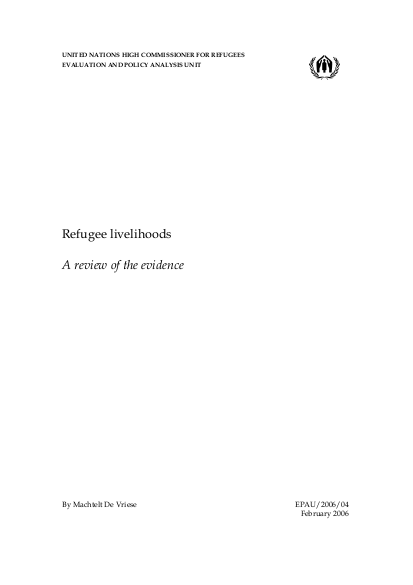
Over the last decade, livelihood approaches have become increasingly common in academic analysis and NGO and development agency practice. The notion of livelihood has also entered the discourse of refugee assistance accompanied by a renewed interest in Protracted Refugee Situations (PRS), Self Reliance (SR) and Empowerment. In recent years, there has been a noticeable shift from high-level abstract dimensions of development towards an increased attention to the refugees themselves and how they seek to construct their livelihoods.
It has become apparent that a wide range of practitioners and researchers wish to see the issue of livelihoods given much greater prominence in the international discussion on human displacement. Is livelihoods the new fashionable topic or is there a realization that the traditional focus of humanitarian assistance is in effect too limited?
The purpose of this synthesis paper is to enhance our understanding of the problems faced by refugees and the solutions created to attain a greater self-reliance. After an overview of livelihood terminology and some relevant definitions, a historical review will provide you with an idea of how the nature of assistance provided to refugees and other people of concern has evolved over the years and where the points of departure with refugee livelihoods are.
Traditionally there has been a tendency amongst humanitarian organizations to approach the issue of livelihoods and self-reliance from a technical perspective. The chapter on Rights-based approach will link the question of livelihoods with the issues of rights and protection.
Understanding refugee livelihood strategies is a prerequisite to improved interventions. Hence, the paper will describe some of the most notable success stories and limitations to the mechanisms and strategies developed by refugees in order to stabilize and enhance their situation.